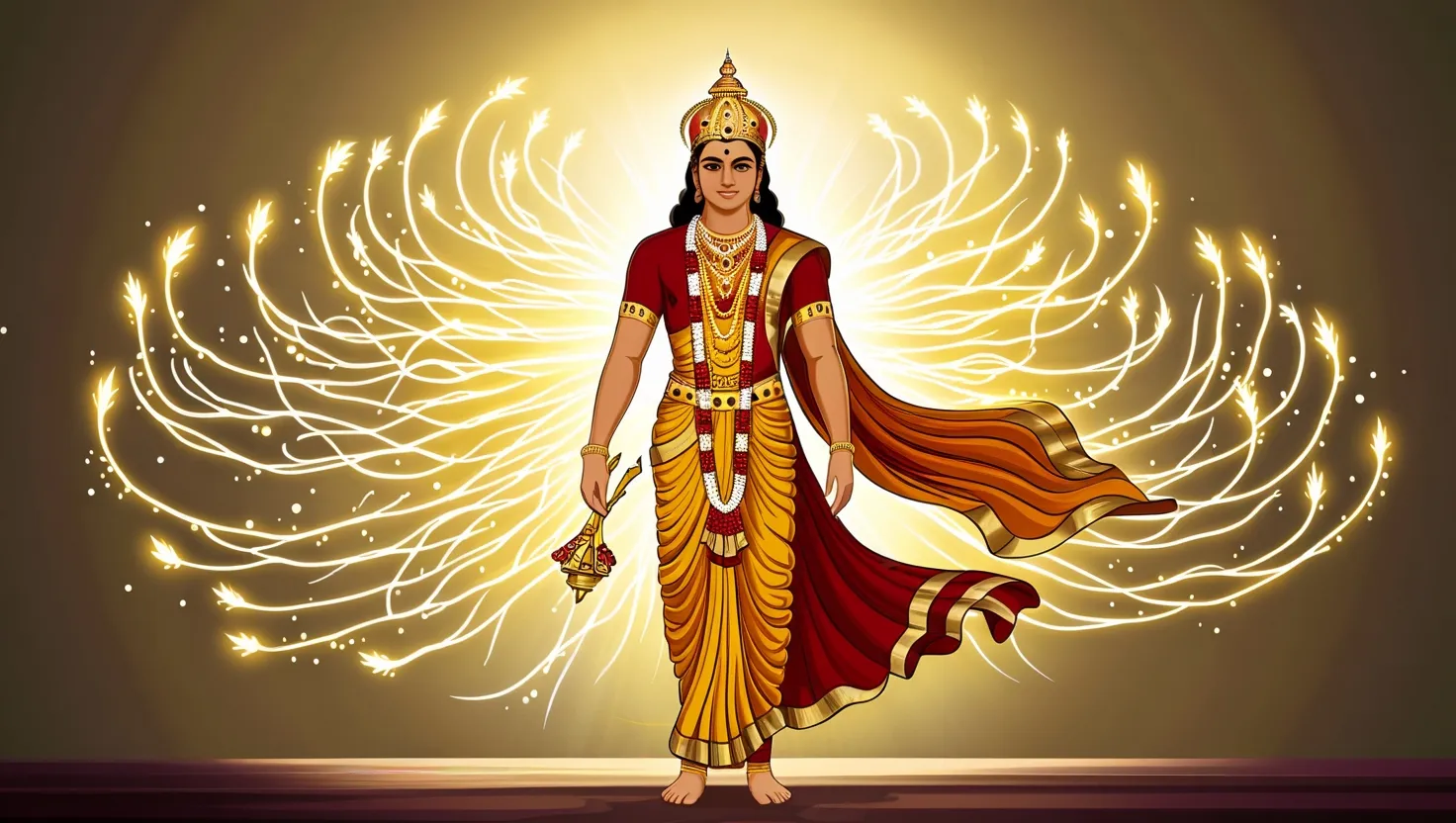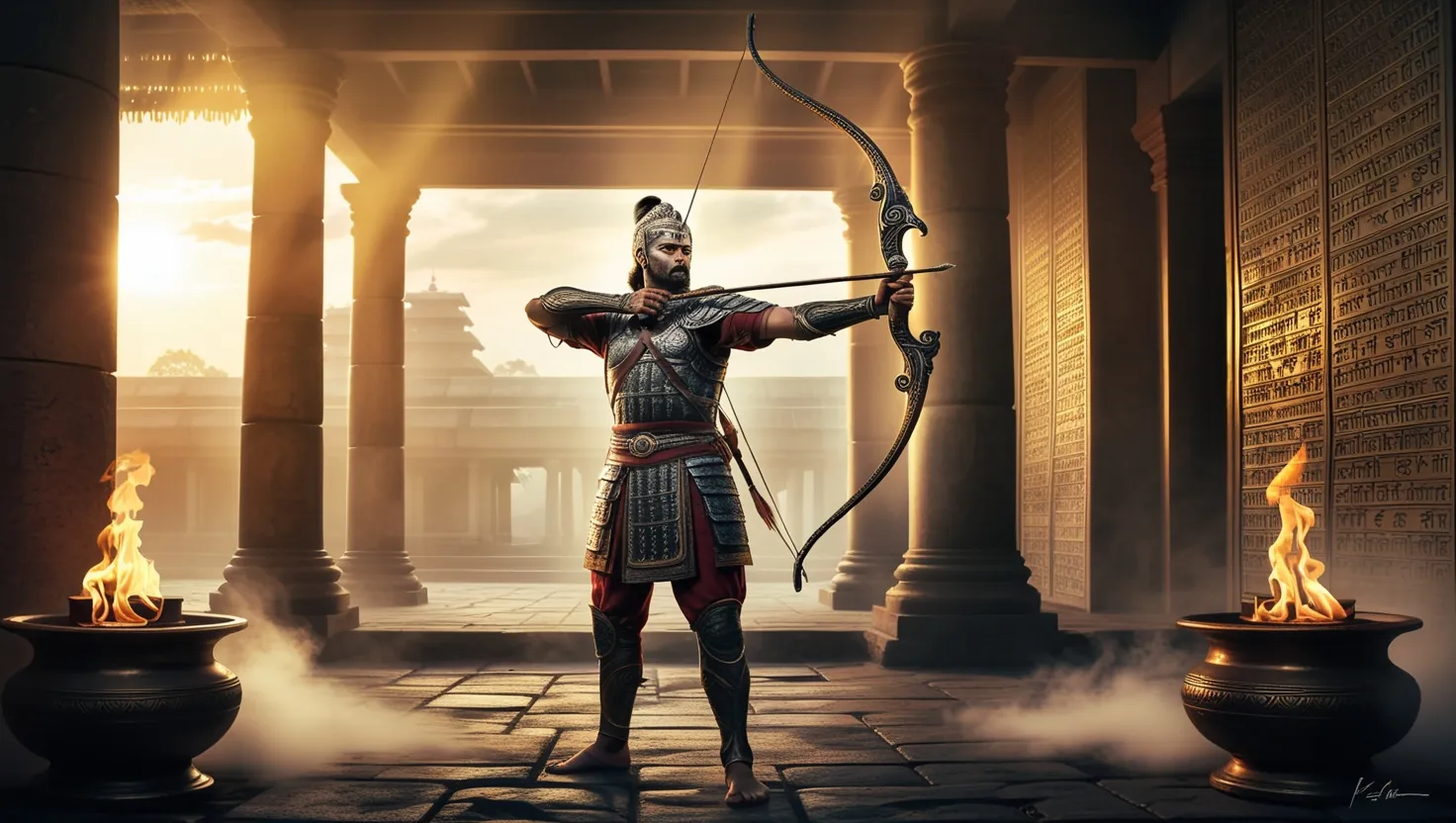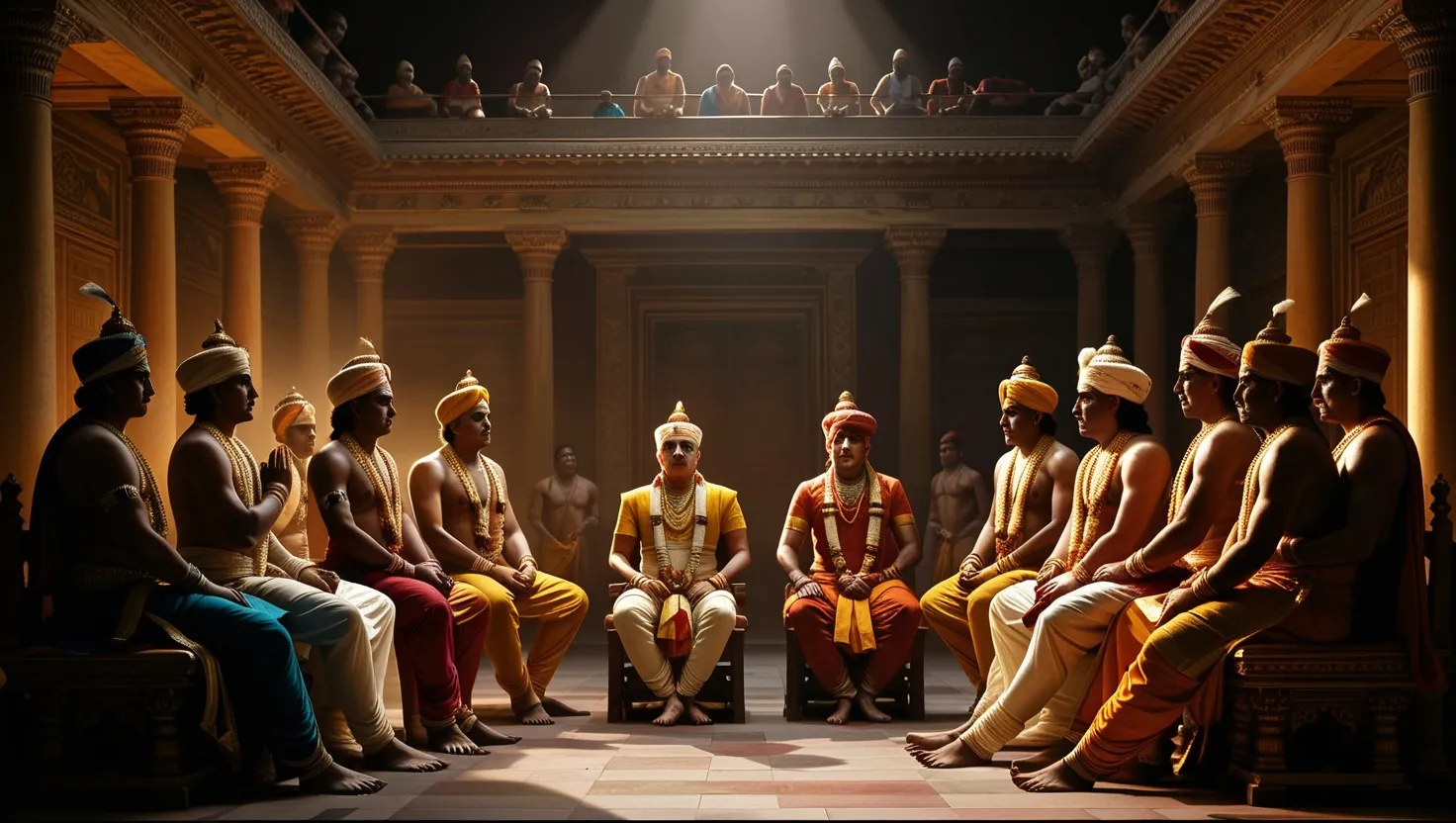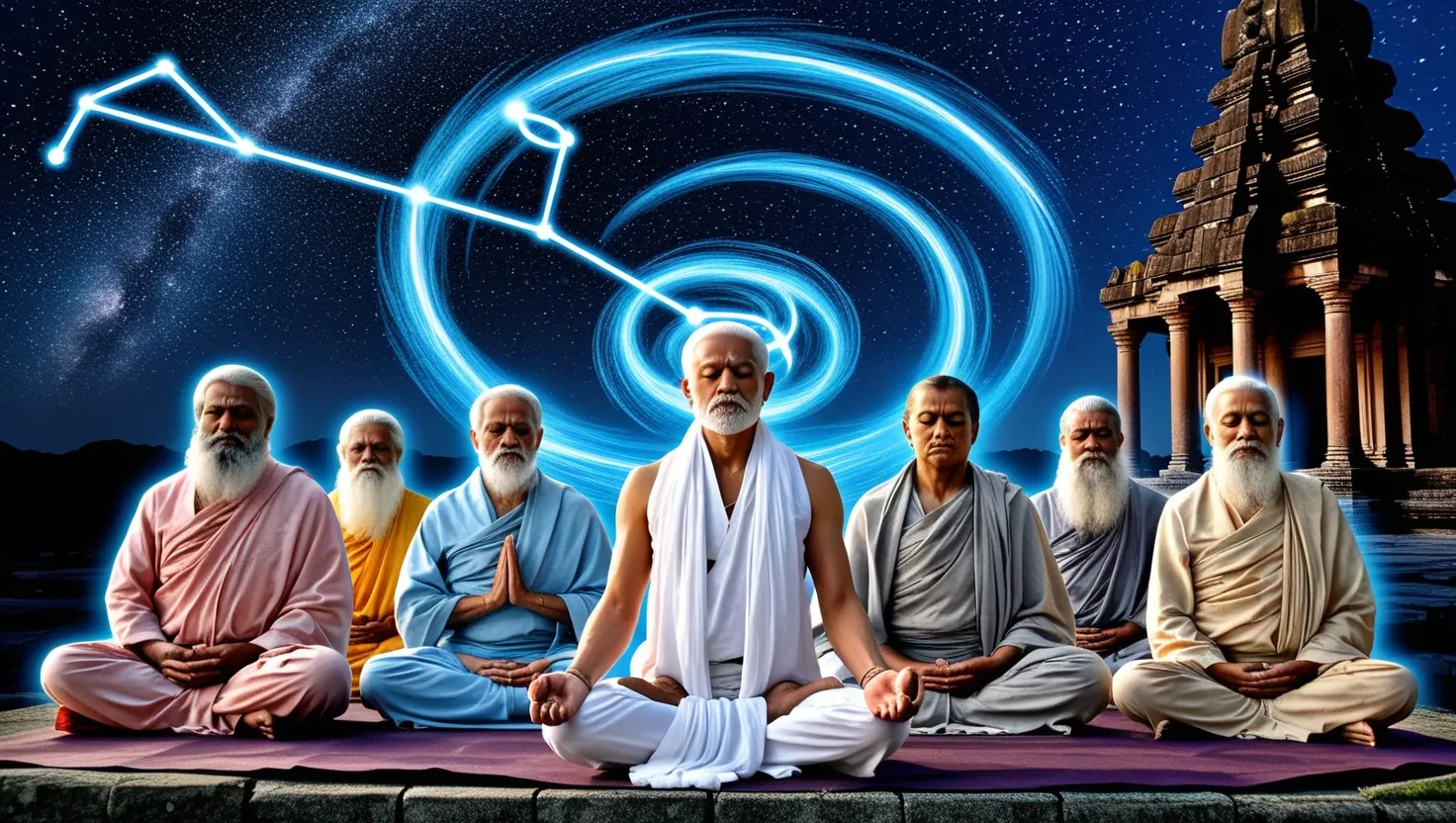Clothing in the Mahabharata often speaks louder than words or swords. Right from the start, I’m drawn to how garments—far from being decorative—carry the weight of fate, honor, disguise, and even the gods’ touch in this epic. The image of Draupadi clinging to her sari as it’s yanked away, only for it to turn inexhaustible, holds power far beyond fabric. It shows that sometimes, what you wear—or what you’re stripped of—can decide the shape your life takes.
Consider Draupadi, forced into a hall full of silent elders, with only a single piece of cloth to shield her. What would you do, standing in her place? When Dushasana grabs her sari, hoping to strip her of dignity, it becomes more than a tussle for clothing—it’s a battle over her autonomy. In the chaos, Draupadi’s silent plea to Krishna transforms the cloth into a shield, an endless stream that leaves her assailant exhausted and defeated. Her sari is no longer a garment, but a living protest, and the court’s inaction only magnifies its significance. Isn’t it extraordinary how this one piece of fabric triggers a vow of vengeance and, ultimately, war?
“Clothes make the man. Naked people have little or no influence on society.” —Mark Twain
But let’s look beyond this familiar episode. How did color figure into their fate? White robes signaled purity and intellect, seen on sages and Drona, who donned white from head to toe. Red, meanwhile, is for sacrifice and danger—worn by soldiers going to battle, reminding everyone that violence is never far away. Think about this: could the color of a warrior’s turban have been a harbinger of death on the field, or a warning to those around him?
Karna—perhaps the most tragic hero—was born armored, both literally and figuratively. His golden shield and earrings seemed to guarantee invincibility, but they also separated him, making him an outsider. When Indra approached him disguised as a poor Brahmin and asked for these emblems as charity, Karna didn’t hesitate. He tore the armor from his own body, bleeding, choosing generosity over self. This moment, while noble, doomed him. It’s fascinating to see how giving up an object of protection exposes both the body and the soul. I find myself asking: are there times in our own lives when letting go of protective layers reveals true character, but also invites vulnerability?
“If I put on a mask, I can show more of who I am than if I show my face.” —Oscar Wilde
Disguise plays another game across the story. The period of exile forced the Pandavas to hide their identities, and their royal garments gave way to humble clothes. Bhima wore an apron as a cook, Arjuna dressed as a dance teacher in bright silks, and Yudhishthira wore austere robes. What’s striking is how these costumes suppress royal pride in favor of survival. You might wonder whether these disguises changed them, or if living behind fabric can ever reshape who we are inside. For the Pandavas, clothing became both mask and shield; slipping into another’s garb forced them to learn humility and patience.
Let’s not forget Krishna—a shepherd, a king, and the cosmic charioteer. His everyday dress was as simple as that of a farmer, showing that real authority does not always require ornaments. Yet when he delivered the Bhagavad Gita, he appeared radiant in a yellow garment, a visual declaration of his divinity. Krishna’s ability to move between plainness and splendor with ease says a lot about what it means to lead: that true power doesn’t depend on display, but sometimes, a dazzling appearance can signal a turning point in destiny. Have you ever noticed how a simple change in your outfit shapes how the world sees you—or how you see yourself?
“We all wear masks, and the time comes when we cannot remove them without removing some of our own skin.” —André Berthiaume
Duryodhana’s dilemma with clothing offers another lesson. At the great feast in Indraprastha, his ornate robes did nothing to hide his insecurity. Confounded by illusions designed to test his humility, he slipped and stumbled, mocked by everyone. His rich clothing offered no protection; instead, it amplified the ridicule. This episode illustrates one of the epic’s enduring messages: a costly robe cannot guarantee dignity. Rather, wisdom—and self-awareness—matter more than outward appearance. When was the last time expensive clothes really helped someone overcome shame or envy?
The aftermath of battle leaves another kind of tapestry. As warriors fall, their battered armor and torn robes scatter across the field, an inventory of loss. These empty shells—once symbols of protection—now echo with the silence of defeat. Abhimanyu’s splintered armor, left behind after his demise, tells of bravery cut short. Bhishma’s blood-stained white robes, as he lies on a bed of arrows, turn into an emblem not just of suffering but also of duty that knows no end. What greater reminder is there that the symbols we don’t take off mark us as deeply as those we choose to wear?
“Fashion is a language that creates itself in clothes to interpret reality.” —Karl Lagerfeld
The Mahabharata’s lessons about attire ripple outward. Even ordinary fabrics carried subtle power. Warriors prepared for battle not just with swords, but with carefully chosen colors, believing certain shades would tip the scales of fortune. Festivals saw yards of crimson and gold silks, each hue matched to mood, season, or religious obligation. Women’s veils, too, had dual meanings—offering modesty or signaling protest, as in Draupadi’s case. It’s interesting to reflect on how our own rituals link fabric with occasion, and how what we wear becomes loaded with meanings, spoken and unspoken.
There’s a less obvious angle, too. Garments could serve as tokens of memory. When a beloved character perished, their attire often became a relic for those left behind—a vest, a bracelet, a blood-stained corner of a sari. These keepsakes outlasted the people, sparking remembrance and often reinvigorating the thirst for revenge or redemption. Is this any different from the way we might keep an old shirt or scarf, not for its beauty, but for the touch of memory it brings?
With every passage, the Mahabharata invites readers to ask: Do we choose our clothes, or do they choose us? Is a king still a king in rags? Can a miracle be woven from humiliation? Does removing armor lay bare not just flesh, but fate itself? I find the answers change each time I revisit these stories, proof that the meaning of fabric in this ancient epic is anything but static.
So next time you fasten a button or drape a scarf, consider for a moment—not just what it covers, but what it might reveal. Clothing in the Mahabharata isn’t mere ornament; it’s the thread on which their destinies—and perhaps ours—are strung.
“What you wear is how you present yourself to the world… Fashion is instant language.” —Miuccia Prada






